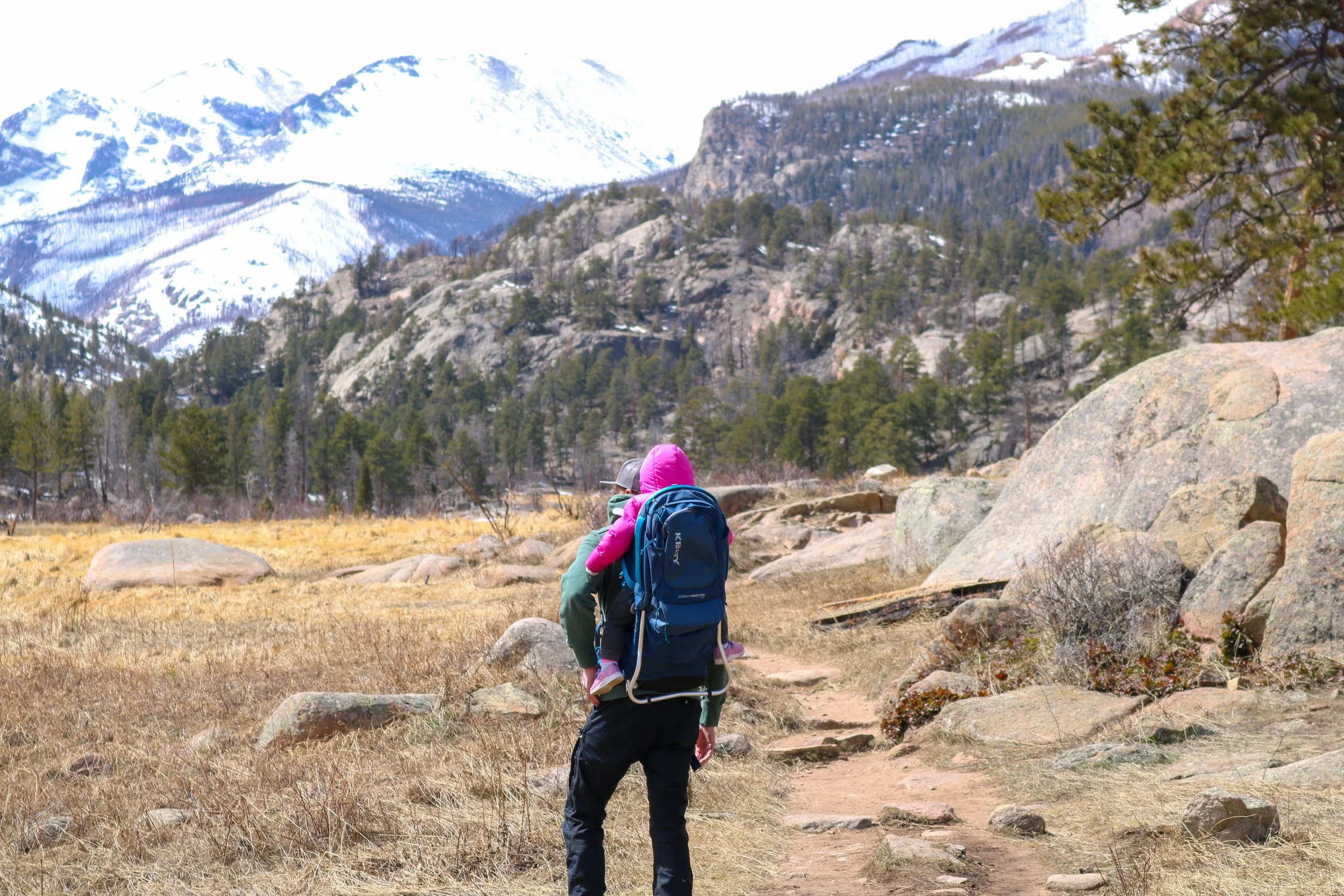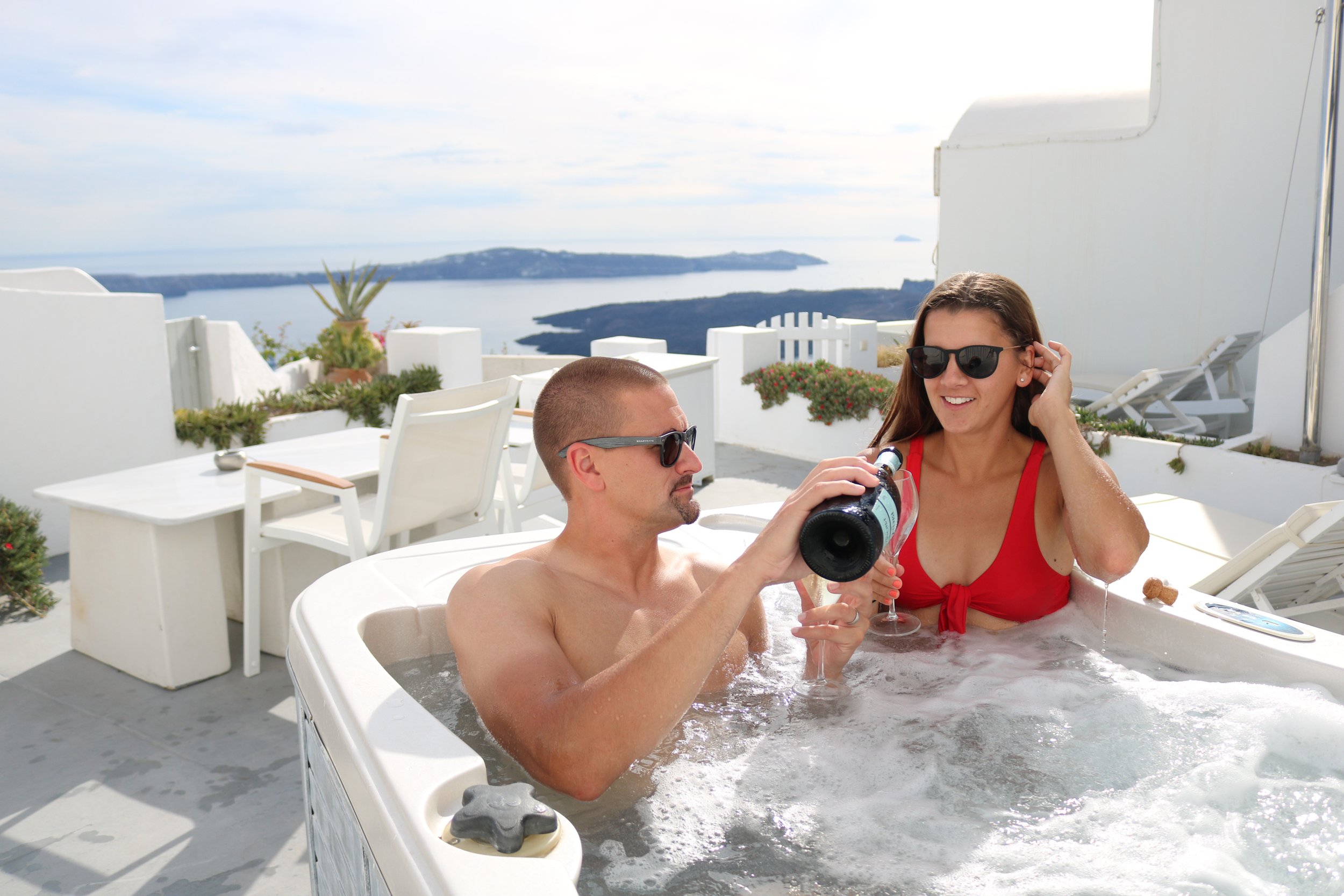In this post I discuss how we spend our money abroad and then break down the cost of our Greece vacation. From a cost perspective, I’ll dive into how we got around, what type of restaurant we dined at and which hotels we chose.
Overview of how we spend money and our style
When discussing money and travel abroad, it always seems like such a mystery as to how much things cost. I’m not sure if this is a result of the travel agent industry, or because culturally we don’t like to talk about money…but it’s an issue. (It also could simply be because it’s difficult to budget a trip until you plan it and the average person isn’t going to spend time on the entire planning process).
The truth of the matter is that we all travel differently depending on our style, financial situation, families etc.. For example, the person who has no kids and wants to travel frugally, can grab a backpack full of clothes, get the cheapest plane ticket they can find to Portugal and stay in hostels. On the other hand, a full family of four, who wants to be comfortable visiting Iceland, has a larger budget and wants to travel comfortably, might spend a LOT more money. Those two trips are dramatically different in cost.
Watching the sunset in Imerovigli (Santorini) with a bottle of local white wine!
For Kailah and I, we approach our time abroad “somewhere in the middle” when it comes to money. Below are the factors we consider relevant to a traveling budget and the route we took for our Greece trip:
Location: We targeted the “hot” locations (like Athens, Mykonos and Santorini), which obvious came with a larger price tag than others.
Duration: We limited our trip to 7 nights - flying out on Friday night and back home on the following Saturday. We have kids, so we didn’t want to leave them for much longer than that.
Family travel: This was a couples trip, so we were much more flexible this time around and could book smaller accommodations.
Accommodations: Lets just say…our appetite for international travel was “high” when we planned this trip. While we didn’t spend for luxury (as we rarely do), we definitely didn’t look to save money on accommodations.
Restaurants: We went “all-in” on food and drinks (that’s our style). Again, we didn’t look for luxury, but easily spent $150-$200 a night on some dinners.
Logistics: We moved around a lot during this trip, driving up cost a bit (4 different locations in the first 4 days). Planes are generally the largest cost in this category, but ferries and car transfers definitely crept up on us.
Mid-ferry beers on our way from Mykonos to Paros (yes, things like this wound up in our “food and drink” cost)
Summary of expenses
The moment we’ve all been waiting for. Drum roll please…the Greece cost for our 7 nights was…
$5,863.92 (all in, including flights)
The official break down by category is as follows:
Accommodations: $1,293.85
Food and drink: 2,255.91
Parking: $323.00
Transportation: 1,991.17
I’ll break down each category a little…
Our Santorini balcony and hot tub at Zenith Blue Villas (respect the “farmers tan” ;) )
Accommodations: Since we stayed 7 nights, our average cost ran at a rate of $185 a night. Which is extremely reasonable in my mind. Especially including that we stayed ON the caldera in Santorini for three nights. That was our most expensive rate at ~$230 a night. Our most inexpensive was $105 for our VERY well located boutique hotel room in Mykonos (Hotel Carbonaki).
Food and drink: Yea…we know. This sounds like A LOT to spend in a week. And it probably is. But if you read our restaurant travel style above, you can easily see how we spent that much (and it was worth it!). A few examples of where we ate…
Our Mykonos dinner at Karavaki overlooking the beautiful town and harbor at sunset summed $185
Dinner at Karavaki overlooking Mykonos
Our first dinner overlooking the caldera in Santorini at the Aegeon Restaurant summed $159
Our final dinner in Santorini cost us $194 at Oia Gefsis in Oia (Santorini)
Parking: $323 is unnecessary here. The economy garage was closed during covid, so we chose to park in central parking at Boston Logan. We easily could have parked at a “park-and-fly” for a much better rate.
Transportation: We saved on flights by using points and only spent $681 to get to Greece. We tacked on another $302 for our flight getting us from Santorini back to Athens. The remaining dollars spent went to ferries and car transport, with the majority being allocated to Ubers and hotel transfers.
To sum it all up…
Exploring Mykonos and found this spot in front of the windmills!
Before I let you go, I want to make sure to drive one point home. I’m sure I sound like a broken record by now, but…cost is relative. This trip fit our style for THIS adventure (styles can change, even between trips!). We could have done it cheaper and we could have done it MUCH more expensive. And with that being said, if we had more flexibility with our time, we probably would have looked to save cash by eating in more and finding longer term accommodations.
If you are interested in all of the details of our Greece 2021 trip, check out our itinerary located here. (you can also see our 2017 Greece details here!).
I hope this helps with future planning and gives transparency into the cost of travel to Greece!
Kyle
Want alerts for when new blogs are posted? Scroll down and subscribe to our email list!
***If you haven’t seen our YouTube videos on our October 2021 trip, check them out below!






















